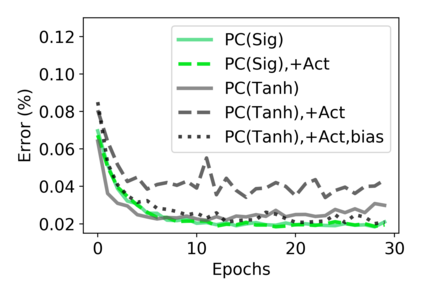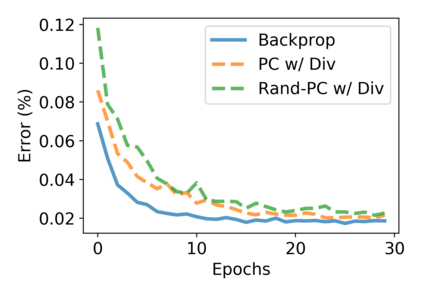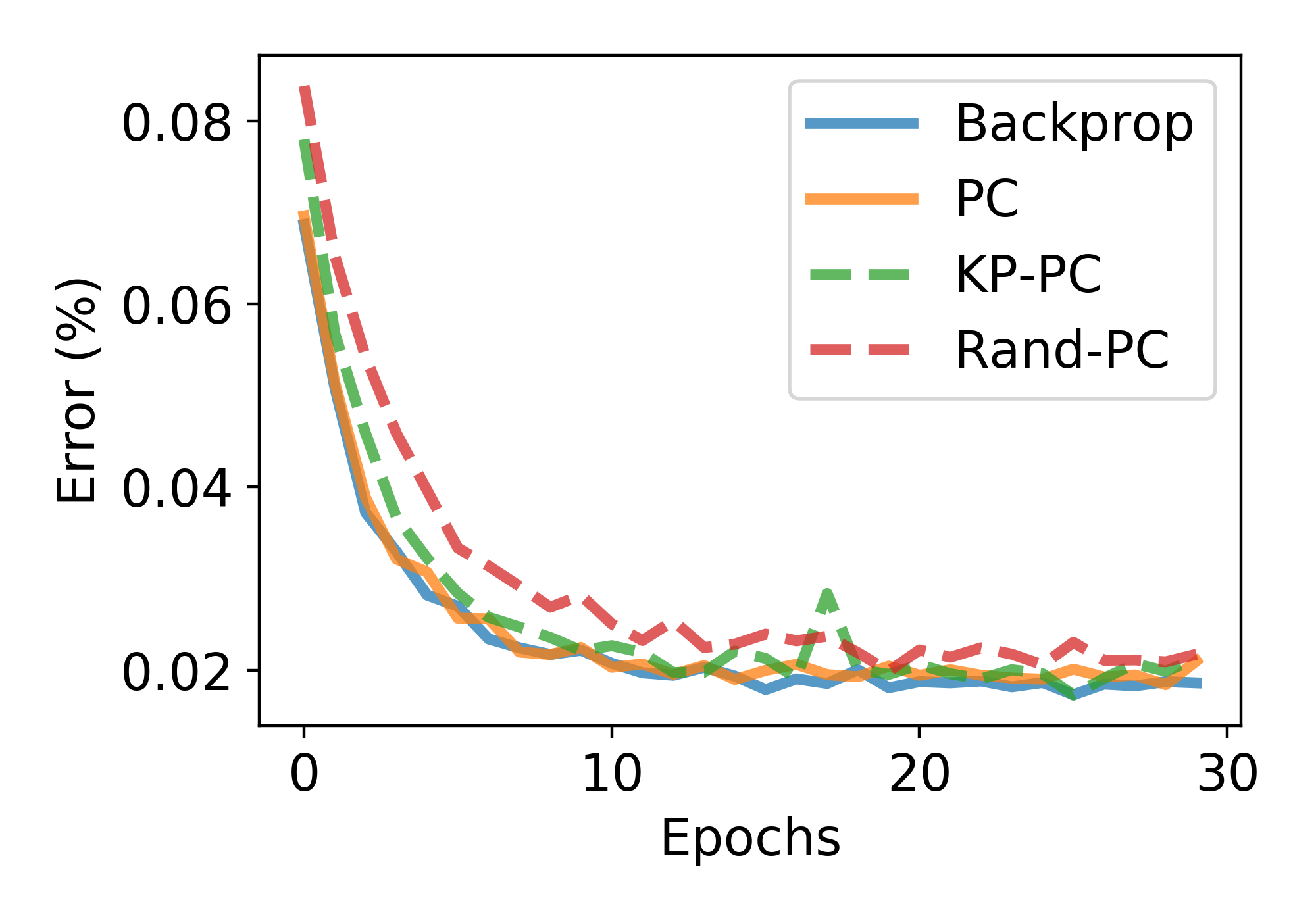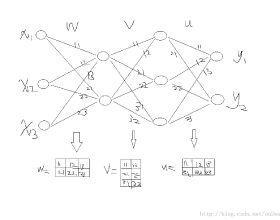Predictive coding (PC) is a general theory of cortical function. The local, gradient-based learning rules found in one kind of PC model have recently been shown to closely approximate backpropagation. This finding suggests that this gradient-based PC model may be useful for understanding how the brain solves the credit assignment problem. The model may also be useful for developing local learning algorithms that are compatible with neuromorphic hardware. In this paper, we modify this PC model so that it better fits biological constraints, including the constraints that neurons can only have positive firing rates and the constraint that synapses only flow in one direction. We also compute the gradient-based weight and activity updates given the modified activity values. We show that, under certain conditions, these modified PC networks perform as well or nearly as well on MNIST data as the unmodified PC model and networks trained with backpropagation.
翻译:预测编码( PC) 是皮质功能的一般理论 。 在一种个人计算机模型中发现的地方性、 梯度学习规则最近被显示为近似反向反向反射。 这一发现表明, 基于梯度的PC模型对于理解大脑如何解决信用分配问题可能有用。 该模型对于开发与神经形态硬件兼容的本地学习算法也可能有用。 在本文中, 我们修改这个个人计算机模型, 以更好地适应生物限制, 包括神经人员只能有一个方向的正发速和突触限制。 我们还计算了基于梯度的重量和活动更新, 以修改活动值为条件。 我们显示, 在某些条件下, 这些经过修改的PC网络作为未经修改的PC模型和经过反向调整训练的网络, 运行良好或接近于 MNIST 数据 。









